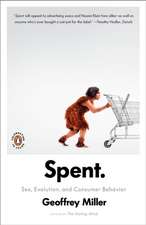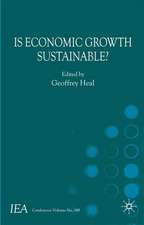Neighborhoods and Urban Development
Autor Anthony Downsen Limba Engleză Paperback – oct 1981
American cities are shifting collections of individual neghborhoods. Thousands of residents move every year within and among neighborhoods; their flows across a city can radically and quickly alter the character of its neighborhoods. What is behind all this ferment—the decline of one area, the revitalization of another? Can the process be made more rational? Can city neighborhoods be stabilized--and older cities thus preserved?
This book argues that such flows of residents are not random. Rather, they are closely linked to overall migration into or out of each metropolitan area and to the way U.S. cities develop. Downs contends that both urban development and the social problems it spawns are built upon social arrangements designed to benefit the middle-class majority. Racial segregation divides housing in each metropolitan area into two or more markets. Socioeconomic segregation subdivides neighborhoods within each market into a class hierarchy. The poor live mainly in the oldest neighborhoods, close to the urban center. The affluent live in the newest neighborhoods, mostly at the urban periphery. This separation stems not from pure market forces but from exclusionary laws that make the construction of low-cost housing illegal in most neighborhoods. The resulting pattern determines where housing is built and what housing is left to decay.
Downs uses data from U.S. cities to illustrate neighborhood change and to reach conclusions about ways to cope with it. he explores the causes and nature of racial segregation and integration, and he evaluates neighborhood revitalization programs, which in reviving part of a city often displace many poor residents. He presents a timely analysis of the effect of higher energy costs upon urban sprawl, argues the wisdom of reviving older cities rather than helping their residents move elsewhere, and discusses the advantages and disadvantages of public and private policies at the federal, state, metropolitan-area, city, and neighborhood levels.
This book argues that such flows of residents are not random. Rather, they are closely linked to overall migration into or out of each metropolitan area and to the way U.S. cities develop. Downs contends that both urban development and the social problems it spawns are built upon social arrangements designed to benefit the middle-class majority. Racial segregation divides housing in each metropolitan area into two or more markets. Socioeconomic segregation subdivides neighborhoods within each market into a class hierarchy. The poor live mainly in the oldest neighborhoods, close to the urban center. The affluent live in the newest neighborhoods, mostly at the urban periphery. This separation stems not from pure market forces but from exclusionary laws that make the construction of low-cost housing illegal in most neighborhoods. The resulting pattern determines where housing is built and what housing is left to decay.
Downs uses data from U.S. cities to illustrate neighborhood change and to reach conclusions about ways to cope with it. he explores the causes and nature of racial segregation and integration, and he evaluates neighborhood revitalization programs, which in reviving part of a city often displace many poor residents. He presents a timely analysis of the effect of higher energy costs upon urban sprawl, argues the wisdom of reviving older cities rather than helping their residents move elsewhere, and discusses the advantages and disadvantages of public and private policies at the federal, state, metropolitan-area, city, and neighborhood levels.
Preț: 196.01 lei
Nou
Puncte Express: 294
Preț estimativ în valută:
37.51€ • 39.16$ • 31.04£
37.51€ • 39.16$ • 31.04£
Carte tipărită la comandă
Livrare economică 04-18 aprilie
Preluare comenzi: 021 569.72.76
Specificații
ISBN-13: 9780815719199
ISBN-10: 0815719191
Pagini: 202
Ilustrații: 5figs.10tabs.
Dimensiuni: 152 x 229 x 15 mm
Greutate: 0.27 kg
Ediția:illustrated ed.
Editura: Brookings Institution Press
Colecția Brookings Institution Press
Locul publicării:United States
ISBN-10: 0815719191
Pagini: 202
Ilustrații: 5figs.10tabs.
Dimensiuni: 152 x 229 x 15 mm
Greutate: 0.27 kg
Ediția:illustrated ed.
Editura: Brookings Institution Press
Colecția Brookings Institution Press
Locul publicării:United States
Notă biografică
Anthony Downs is a senior fellow in the Economic Studies Program at the Brookings Institution. His specialties are housing, real estate, real estate finance, metropolitan planning, demographics, and transportation. His books include New Visions for Metropolitan America (Brookings/Lincoln Institute for Land Policy, 1994), and Still Stuck in Traffic: Coping with Peak-Hour Traffic Congestion (Brookings, 2004).
Descriere
American cities are shifting collections of individual neghborhoods. Thousands of residents move every year within and among neighborhoods; their flows across a city can radically and quickly alter the character of its neighborhoods. What is behind all this ferment—the decline of one area, the revitalization of another? Can the process be made more rational? Can city neighborhoods be stabilized--and older cities thus preserved?
This book argues that such flows of residents are not random. Rather, they are closely linked to overall migration into or out of each metropolitan area and to the way U.S. cities develop. Downs contends that both urban development and the social problems it spawns are built upon social arrangements designed to benefit the middle-class majority. Racial segregation divides housing in each metropolitan area into two or more markets. Socioeconomic segregation subdivides neighborhoods within each market into a class hierarchy. The poor live mainly in the oldest neighborhoods, close to the urban center. The affluent live in the newest neighborhoods, mostly at the urban periphery. This separation stems not from pure market forces but from exclusionary laws that make the construction of low-cost housing illegal in most neighborhoods. The resulting pattern determines where housing is built and what housing is left to decay.
Downs uses data from U.S. cities to illustrate neighborhood change and to reach conclusions about ways to cope with it. he explores the causes and nature of racial segregation and integration, and he evaluates neighborhood revitalization programs, which in reviving part of a city often displace many poor residents. He presents a timely analysis of the effect of higher energy costs upon urban sprawl, argues the wisdom of reviving older cities rather than helping their residents move elsewhere, and discusses the advantages and disadvantages of public and private policies at the federal, state, metropolitan-area,
This book argues that such flows of residents are not random. Rather, they are closely linked to overall migration into or out of each metropolitan area and to the way U.S. cities develop. Downs contends that both urban development and the social problems it spawns are built upon social arrangements designed to benefit the middle-class majority. Racial segregation divides housing in each metropolitan area into two or more markets. Socioeconomic segregation subdivides neighborhoods within each market into a class hierarchy. The poor live mainly in the oldest neighborhoods, close to the urban center. The affluent live in the newest neighborhoods, mostly at the urban periphery. This separation stems not from pure market forces but from exclusionary laws that make the construction of low-cost housing illegal in most neighborhoods. The resulting pattern determines where housing is built and what housing is left to decay.
Downs uses data from U.S. cities to illustrate neighborhood change and to reach conclusions about ways to cope with it. he explores the causes and nature of racial segregation and integration, and he evaluates neighborhood revitalization programs, which in reviving part of a city often displace many poor residents. He presents a timely analysis of the effect of higher energy costs upon urban sprawl, argues the wisdom of reviving older cities rather than helping their residents move elsewhere, and discusses the advantages and disadvantages of public and private policies at the federal, state, metropolitan-area,














